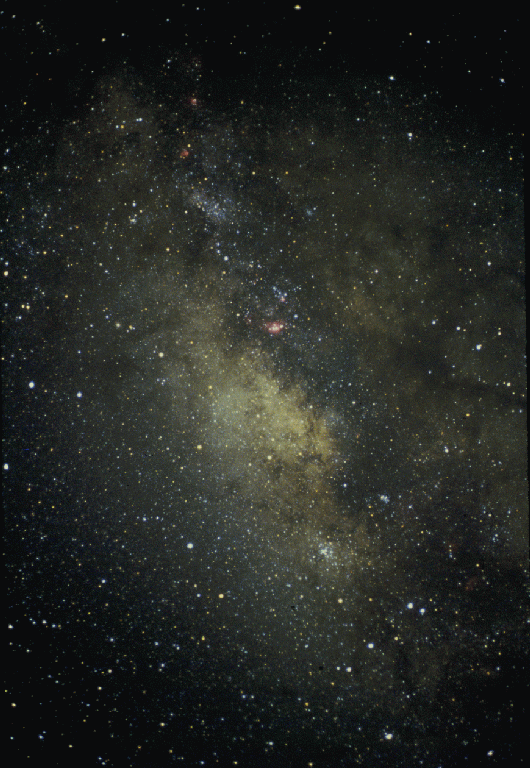
One of the busiest areas in our sky, this is the region around the Galactic Center near the border obetween Scorpius and Sagittarius. This is a 30-minute exposure on Ektachrome 400 taken from Cerro Tololo, Chile (and scanned at fairly high density), using a Canon 50mm lens wide open at f/1.8 . North is at the top in this view, which spans an area about 27 by 40 degrees. This view shows the intricate absorbing dust lanes which block our view of the galactic center, and the yellowish color of the old bulge stars (dimmed to brownish when there's noticeable reddening by interstellar dust). This film has a very strong response to the red light of H-alpha from emission nebulae, so that the many H II regions in this direction show up well.
Can't tell the players without a program? Have a look at the labelled version of this picture, which marks the 17 Messier objects in this area, plus constellation lines and some of the more prominent non-Messier clusters and nebulae to be found here. They include the Eagle , Omega, Lagoon, and Trifid nebulae, the globular clusters M25, M22, M28, M54, M69, and NGC 6723, open clusters M6, M7, M23, M21, and M18, plus the star cloud M24. Also to be seen are the dark Pipe Nebula (recently described by John Shibley as part of the Dark Horse Nebula) and Baade's Window, best known as the region with the clearest optical view into the central bulge of the Milky Way and therefore especially important to our understanding of the structure and evolution of our Galaxy. Studying this area from Northern Hemisphere observatories can be interesting - from the Crossley reflector at Lick Observatory, I recall lying on the observing floor looking up into the guiding eyepiece to get a plate of Baade's Window.
Last changes: 7/2003 © 2003